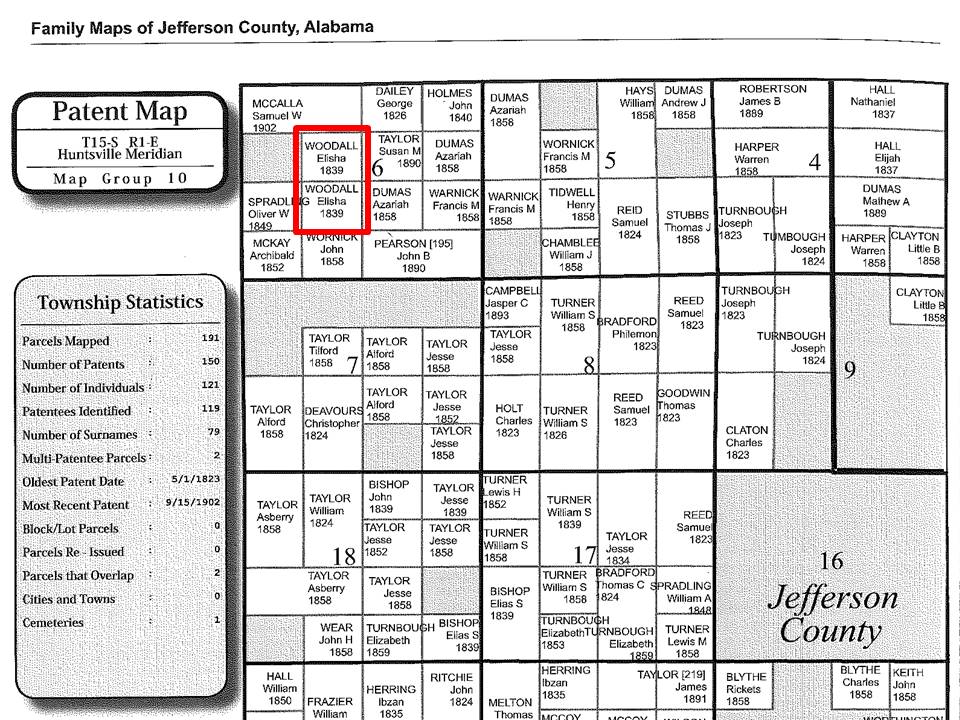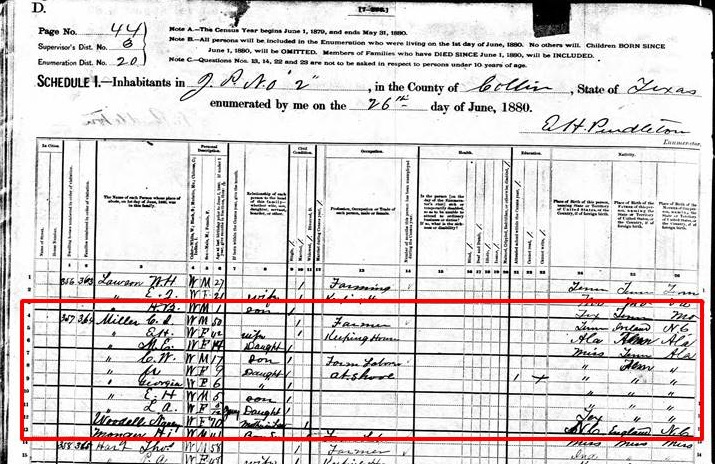Into the Archives!
In Special Collections, we get donations of all shapes and sizes. Books, papers, artifacts – they all come to us, and we make them available for researchers. Sometimes, though, it is the things we don’t get to keep that really intrigue us.
Recently, we had a visitor from the local Goodwill Store. She brought in a framed document that was donated to the store, and she was trying to verify if the document was original or a copy. The frame had kept the document – a land record issued by the U.S. government and signed by Martin Van Buren – in great condition. We determined relatively quickly that the 1839 document was most likely an original, based on the orange wax still present around the seal. Well that was enough information for our visitor, but she had already made a mistake – she let history nerds look at it.

Sometimes, you can glean a lot from a single sheet of paper. In the case of this land record, we were left with many speculations. Here are just a few questions we started with:
- Who was Elisha Woodall?
- What was the April 24, 1820 Act of Congress?
- What made this piece of land near Tuscaloosa special?
It’s times like these that we are thankful for the internet and its abounding resources. A quick Google search told us that the Land Act of 1820 was a federal law that ended the purchase of U.S. public lands on credit or installment. The new law required full payment at the time of purchase and registration. Public domain lands were located on the frontier – at that time Ohio, the Northwest Territory, and the Missouri Territory. Those areas, however, do not include Alabama in 1820, which led us to explore what had happened with Alabama land between then and the 1839 record.
Alabama and land cession is an interesting, albeit convoluted, piece of history (check out this neat resource we found). Tuscaloosa and the surrounding area fell under the Treaty of October 24, 1816 and Treaty of September 27, 1830 land cessions, by which the Choctaw Nation ceded lands to the U.S. government in central western Alabama. Throughout the 1820s and 1830s, Choctaw, Creek, Chickasaw, and Cherokee Nations all ceded land to the U.S. government, under immense pressure and force.

After looking at the conditions under which he could have purchased the land, we looked for Woodall himself. Elisha Woodall purchased just over 80 acres of land in the 15th Township of Jefferson County, section 6, near Big Canoe Creek. Don’t be fooled – the land record may say “subject to sale at Tuscaloosa,” but that is actually referring to the fact that Tuscaloosa was the capital of Alabama at the time and was the locale of the Land Office. Knowing that he was from Jefferson County, we found an 1830 Census listing an Elisha Woodall (age 20-29) in that county living with a wife and three children. This cross-references with an 1840 Census listing an Elisha Woodall (age 30-39) in that county living with a wife, two sons, and five daughters.

According to the 1840 Census, his oldest child, a girl, was born between 1825 and 1830, indicating that he may have married just before then. A marriage record appears to confirm the presumed timeline, showing that an Elisha Woodall married Nancy Blythe (registered 3 Jan. 1825; solemnized 12 Jan.). The marriage record not only gives the name and surname of a wife, it also tells us that Nancy was underage and needed the consent of her mother Sarah (which brings up another question concerning the whereabouts of Nancy’s father). It also names as witness Jonathon Woodall, who could be Elisha’s father or brother. Another possible relation, Sim Blythe, was Justice of the Peace.

Next, we had to do a lot of math. The problem with starting at the beginning of a family line, rather than with current living relatives, is you don’t quite know all the names and dates – if you did know, genealogy would be easy! To explain our dilemma, you need to know something about the U.S. Federal Census: before 1850, the census only listed the head of household with tally marks accounting for family members within certain age ranges. With Elisha Woodall, we hit a road block after the 1840 Census, which means we were stuck not knowing his children’s names and whether they and their mother ever left Jefferson County. So, what do you do when all you have is tally marks indicating sex and age? You make a chart like this:
When we couldn’t find Elisha in the 1850 Census, we searched for the only other possible name we knew from the family: Nancy. Looking for Nancy Woodall was a gamble because if Elisha had died before 1850, it is probable that a young twenty-something Nancy would have remarried and changed her name (at which point we would have started looking for a marriage record – a considerable feat when you know that many marriage records at the time were indexed under the groom’s surname). But we were lucky. We found a Nancy Woodall (listed without Elisha) in the 1850 Census in Yalobusha County, Mississippi – about 200 miles west of Jefferson County, Alabama. This again was a guess at the correct Nancy because the only thing we had to go on was the ages and sex of her children mostly lining up with the previous census data. The 1850 Census also listed several other Woodall families in Yalobusha County, including a Jonathan, age 50 – about ten years older than Elisha would have been. Remember the Jonathan we found in the marriage record?? If Elisha had died and other Woodall families were migrating, it is plausible that Nancy Woodall would have done so at the same time.

This led us to a book called Yalobusha Bound, by Chris B. Morgan. In Yalobusha Bound, Morgan uses the 1850 Census as a way to study how Yalobusha County developed as a stopover, and sometimes stopping point, during the second wave of migration to Texas in the early 1850s. He points out that migraters came from Tennessee, Alabama, Georgia, the Carolinas, and Virginia, so it is not a stretch to imagine that the Woodall family may have migrated there. What is even more compelling is that an appropriately aged Nancy Woodall shows up in the 1880 Census in Collins County, Texas. She is listed as a mother-in-law living in the house of C.I. Miller and his wife E.H. Miller – could this E.H. be the Emily named in the 1850 census?
There are discrepancies between the 1850 and 1880 Censuses: in 1850, Nancy was listed as having been born in Georgia, whereas the Nancy in the 1880 Census was born in North Carolina. Morgan pointed out that “The censustakers for Yalobusha County that year [1850], and particularly the one who transcribed the bulk of the first portion, made many glaring errors in his work….” Perhaps transcription error is the case with this Nancy, or perhaps these are two different Nancys and have nothing to do with each other. This question alone brings us back to the proverbial research drawing board.

We know what you’re thinking – “Wow! You did all this online and with a couple books?” Technically, yes; HOWEVER, there is no way to confirm any of this without looking at deeds, court records, and probate records from Jefferson County, Yalobusha County, and Collins County. That would take a research trip because not everything is available online or transcribed in a book. Now you’re thinking, “So everything I just read was complete conjecture?” Well no – or yes – let’s settle on a solid maybe. This is more of an unconfirmed hypothetical and didn’t even include all the other documents and dead ends we ran into. Why, then, did we go to the effort of relaying all of this to you? We told you – this is what happens when you show something to history nerds.
Interested in genealogy?
Email us at hhrdept@hmcpl.org or call 256.532.5969
Our next genealogy class is "Finding Native American Ancestors Online"
Sign up here.
Resources consulted:
- Accessgenealogy.com
- Ancestry.com (U.S. Federal Census and Alabama marriages) – Interested in exploring Ancestry? We have a subscription you can use at the library!
- Boyd, Gregory A. Family Maps of Jefferson County, Alabama Deluxe Edition with homesteads, roads, waterways, towns, cemeteries, railroads, and more. Available in the Special Collections Department of the Downtown Huntsville Library (H976.178 BOY).
- Familysearch.com – Accessible through the library!
- Fold3.com – Accessible through the library!
- Gandrud, Pauline Jones. Marriage Records of Jefferson County, Alabama, 1818-1864 being transcribed and indexed from the original marriage books. Available in the Special Collections Department of the Downtown Huntsville Library (H976.178 GAN).
- Morgan, Chris B. Yalobusha Bound: Yalobusha County in 1850. Available in the Special Collections Department of the Downtown Huntsville Library (H976.282 MOR).

